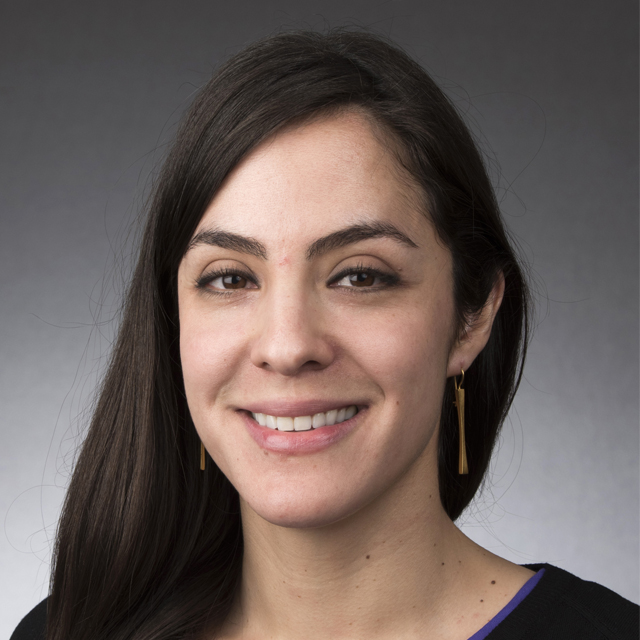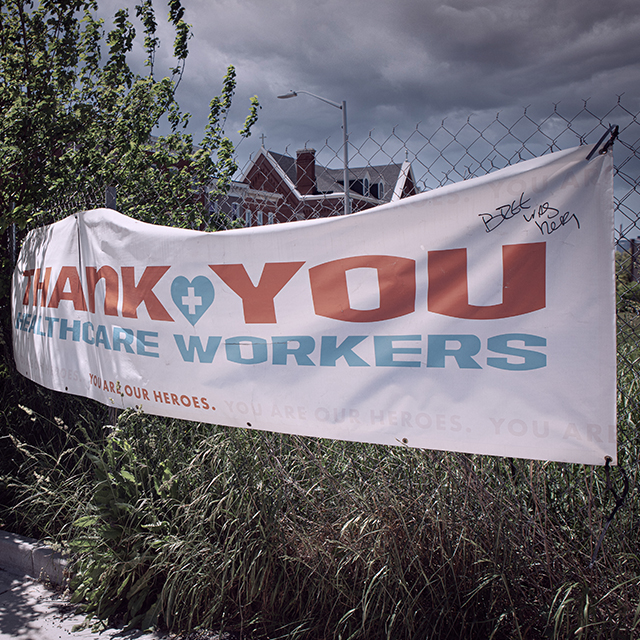When the omicron variant of the coronavirus that causes COVID-19 began to surge late last year, the nursing staff at the Johns Hopkins Kimmel Cancer Center needed a fast solution to a growing problem: more and more cancer patients were testing positive for the virus.
Whether their patients came to the center for urgent care or for a regularly scheduled appointment, nurses Donna Berizzi and MiKaela Olsen, along with oncology medical director Carol Ann Huff, knew that safe treatment of COVID-19 and cancer at the same time meant they needed an inpatient biomode unit — and quick.
Severe cases stemming from the highly contagious coronavirus strain could be life-threatening for patients who are immunocompromised, such as those receiving treatments like chemotherapy or radiation.
But a fast-tracked decision and a quick construction turnaround produced, in less than a week, a five-bed COVID-19 biomode unit especially for Johns Hopkins patients with cancer, says Olsen, the clinical program director for oncology at The Johns Hopkins Hospital and for the Johns Hopkins Health System.
After Johns Hopkins Hospital leadership agreed that a biomode unit was critical to keep Kimmel Cancer Center patients safe during their cancer treatment, the facilities department went to work immediately. The new unit, on the fourth floor of the Harry and Jeanette Weinberg Building, was completed in four days. It’s staffed by two registered nurses, as well as a unit associate and a clinical technician. Kelly Wargo, a long-time cancer center nurse and educator, took the lead as the new unit’s interim manager.
“We opened the inpatient biomode unit on Jan. 5,” Olsen says. “It’s been full ever since.”
Although they look similar to typical hospital rooms, biomode units have several features that prevent contagions — such as the coronavirus — from wafting out the door or through the ventilation system, potentially exposing other patients and hospital staff members to infectious microbes. Special equipment filters and cleans the air, which then gets re-circulated, while negative pressure keeps contaminated air from escaping. The units also feature special negative pressure anterooms where health care workers can safely put on and take off their personal protective equipment.
Anticipating a post-holiday surge of patients exposed to the coronavirus that causes COVID-19, the oncology leadership team also decided to expand access to its 11-bed urgent care oncology evaluation and treatment center (OETC). This facility, which is also a biomode unit, offered services mainly during regular business hours, but a sharp increase in patient demand would mean longer waits and potentially delayed urgent care.
A week after opening the inpatient biomode unit, the oncology team began offering OETC services 24 hours per day, seven days per week.
The nursing team established round-the-clock shifts to staff the facility, which requires two nurse practitioners, four registered nurses, two clinical technologists and a unit associate. Some oncology nurses from the inpatient area have taken shifts in the OETC to accommodate the growing volume. On Jan. 18, the OETC treated 30 patients — its highest one-day total yet. Only two of those patients required hospitalization.
“Even before we moved to 24/7, we’d been treating about 170 OETC patients a month,” says Olsen. “But the demand is even greater now. We project volumes closer to 500 a month.”
CANCER CARE CAN’T WAIT
Many patients coming to Johns Hopkins for cancer care don’t have the option to delay their next treatment until the pandemic settles down. After a bone marrow transplant, for example, it’s critical to keep treatments on schedule, according to Olsen.
“When you give a patient chemotherapy, you’re destroying the cancer cells,” she explains. “But you’re also destroying the [normal cells] in the bone marrow. These patients must receive their new cells to survive.”
Olsen says that, during the first year of the pandemic, the cancer center team experienced difficulties admitting patients receiving cancer treatment to hospital units solely dedicated to care of patients with COVID-19. Patients whose therapy includes weakening their natural immune system are more vulnerable to infections of all kinds — including COVID-19.
“A lot of our patients had to be admitted to the hospital’s COVID-19 units,” Olsen recalls, “but their care is unique. The treatments are complex and require oncology-trained nurses to administer.”
Olsen says there were many challenges monitoring and treating patients in various units in different buildings across the Johns Hopkins medical campus.
“It meant we were going in and out of COVID-19 units to care for our patients,” says Olsen, “and then back to the cancer center. It wasn’t ideal.”
LEARNING FROM THE FIRST WAVE
The omicron strain of the coronavirus that causes COVID-19 was first discovered in South Africa in November of last year. Researchers and epidemiologists correctly predicted that the fast-spreading variant would soon reach the United States, leading to a sharp increase in infections.
By December, things started looking eerily familiar, says Donna Berizzi, The Johns Hopkins Hospital’s senior director of oncology nursing. The omicron variant was spreading faster than infectious disease experts could track it. On Nov. 29, 2021 Maryland reported 762 new COVID-19 infections, the lowest total since August of that year. Five days later, on Dec. 4, the state’s rate of infection more than doubled. Berizzi knew the omicron wave was only days away.
Berizzi joined the Johns Hopkins Kimmel Cancer Center in June 2020 — shortly after leaving her job managing outpatient oncology and therapeutic infusion nursing at Manhattan’s Mount Sinai Hospital. From March until May of that year, long before the development of COVID-19 vaccines, New York City was the American epicenter of the pandemic.
“Our hospital went from zero to completely overwhelmed in about four days,” says Berizzi.
The New York hospital system remained overburdened through much of that spring, as coronavirus cases soared, claiming nearly 24,000 lives. Berizzi and her Mount Sinai nursing colleagues had to find innovative ways to keep patients who had cancer safely away from patients with coronavirus infection.
Drawing from her experience in New York, Berizzi worked with the Johns Hopkins ambulatory cancer nursing team to expand the OETC’s hours.
Olsen says both biomode units have largely succeeded in keeping patients with cancer away from the general hospital population.
“We’ve been able to either admit the patients to our inpatient biomode unit or, even better, discharge them to recover at home,” Olsen says. “More than 80% of our patients leave the OETC to go home after their visit.”


